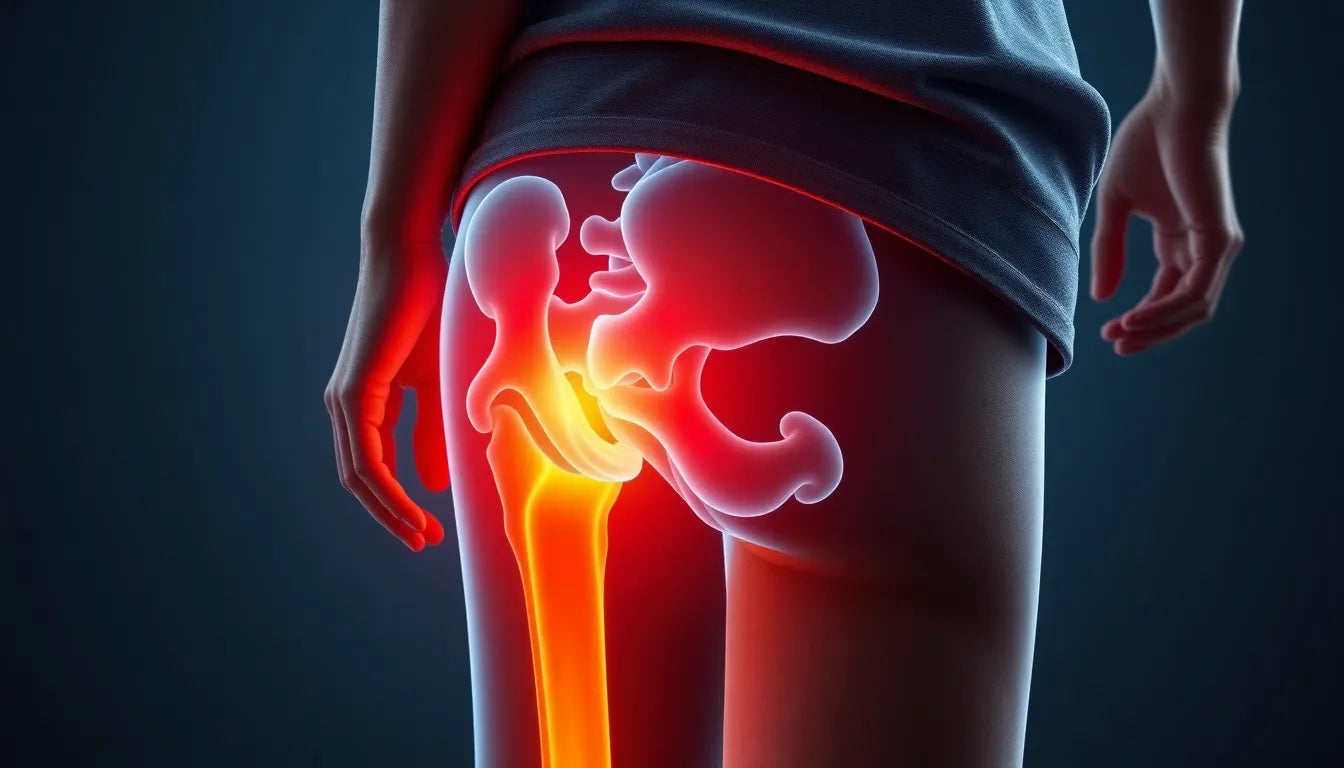Back pain, or "ondt i ryggen," is a common ailment that affects millions of people worldwide, impacting their daily lives in significant ways. From mild discomfort to severe, debilitating pain, back issues can hinder productivity, restrict movement, and diminish overall quality of life. Whether you're experiencing a slight twinge after a long day at work or chronic pain that persists over time, understanding the nature of back pain is crucial for effective management and relief.
types of back pain
Back pain can generally be categorized into two types: acute and chronic. Acute back pain is typically short-term, often resulting from sudden movements or injuries such as lifting heavy objects improperly. This type of pain usually resolves within a few weeks with appropriate care and rest. On the other hand, chronic back pain persists for more than three months and may be caused by underlying conditions such as arthritis or disc degeneration. Understanding the distinction between these types is essential for determining the appropriate course of treatment and management.
why understanding back pain matters
Recognizing the underlying causes of back pain is vital to preventing its escalation. By identifying the root causes—whether they are mechanical, lifestyle-related, or due to medical conditions—individuals can take proactive steps to manage their symptoms effectively. This understanding not only aids in alleviating current discomfort but also plays a significant role in preventing future episodes. Moreover, effective management strategies can help improve overall quality of life, allowing individuals to maintain their daily routines without interruption.
In summary, back pain is a prevalent issue that affects many aspects of life, from work to leisure activities. By distinguishing between acute and chronic pain and understanding the importance of addressing the root causes, individuals can better manage their symptoms and prevent further complications. In the subsequent sections, we will delve deeper into the specific causes of back pain, explore common symptoms, and discuss effective treatment and self-care strategies to help you regain control over your health and well-being.
causes of back pain
Understanding the underlying causes of back pain is essential for effective management and prevention. One of the most common causes is mechanical and muscular issues, such as muscle strain and poor posture. These are often the result of improper lifting techniques, prolonged sitting, or repetitive movements that strain the back muscles. Herniated discs, a condition where the cushioning between vertebrae slips out of place, can also cause significant discomfort and require medical attention.

Women's Posture Shirt™ - White
Patented design activates muscles, improves posture & relieves tension for women.

Men's Posture Shirt™ - White
Activates muscles and supports posture, helping relieve back pain for men.
Lifestyle factors play a crucial role in the development of back pain. Sedentary lifestyles, characterized by long periods of sitting, often contribute to weakened back muscles and increased strain on the spine. Poor ergonomics, such as an ill-fitted chair or desk setup, can exacerbate these issues, leading to chronic discomfort.
Moreover, certain medical conditions can lead to persistent back pain. Arthritis, osteoporosis, and infections are notable examples. Arthritis can cause inflammation and stiffness in the spine, while osteoporosis weakens bones, making them more susceptible to fractures. Infections, although less common, can directly affect the spine and surrounding tissues, resulting in severe pain.
symptoms and when to seek medical attention
Back pain symptoms can vary widely, but common indicators include localized pain, stiffness, and reduced mobility. These symptoms can significantly impact daily activities, making even simple tasks challenging. However, certain symptoms require immediate medical attention. Red flags include radiating pain that extends to the legs or arms, numbness, and muscle weakness. These may indicate nerve compression or more severe underlying conditions that necessitate prompt evaluation by a healthcare professional.
treatment and self-care strategies
Addressing back pain effectively often involves a combination of rest and activity modification. It is crucial to avoid activities that exacerbate the pain, such as heavy lifting or prolonged sitting. Resting the affected area can aid in recovery, but it's equally important to maintain gentle movement to prevent stiffness.
Thermal therapies, such as applying ice or heat, can provide significant symptom relief. Ice packs are beneficial in reducing inflammation and numbing acute pain, while heat therapy helps relax tense muscles and improve blood flow to the affected area.
Physical therapy and targeted exercises are instrumental in alleviating acute back pain. A physiotherapist can design a personalized exercise program focusing on strengthening core muscles and improving flexibility, which are critical for supporting the spine and preventing future injuries.
For those seeking additional relief, medication and alternative therapies can be considered. Over-the-counter pain relievers, like ibuprofen or acetaminophen, can help manage pain levels. Additionally, some individuals find benefit in alternative treatments such as chiropractic care or osteopathy, which focus on improving spinal alignment and mobility.
In summary, understanding the various causes of back pain, recognizing symptoms that warrant medical attention, and implementing effective treatment and self-care strategies are vital steps in managing and alleviating back discomfort. By addressing these aspects, individuals can enhance their quality of life and minimize the impact of back pain on their daily activities.
prevention and long-term management of back pain
Preventing back pain, or "ondt i ryggen," and managing it over the long term involves a multifaceted approach focused on lifestyle adjustments and ergonomic practices. One of the most effective preventive measures is maintaining good posture throughout daily activities. Whether sitting at a desk or standing for extended periods, ensuring that your spine is aligned and supported can significantly reduce the risk of developing back pain.
Ergonomics plays a crucial role in preventing back issues. Investing in ergonomic furniture, such as chairs and desks that promote proper posture, can help minimize strain on the back. Additionally, ensuring that computer screens are at eye level and that keyboards are positioned to avoid wrist strain can further support spinal health.
Incorporating exercises that strengthen the core and improve flexibility is another key strategy in preventing back pain. Core-strengthening exercises, such as planks and bridges, help support the spine and reduce the likelihood of injury. Flexibility exercises, like yoga or stretching routines, can enhance range of motion and decrease muscle tension.
Reducing sedentary behavior is vital for long-term back health. Prolonged sitting can weaken back muscles and contribute to discomfort. Incorporating regular physical activity into your routine, such as walking, swimming, or cycling, can help maintain a healthy spine and prevent future episodes of back pain.
frequently asked questions
what are the most common causes of back pain?
The most common causes of back pain include mechanical issues like muscle strain, poor posture, lifestyle factors such as prolonged sitting, and medical conditions like arthritis and herniated discs.
when should I see a doctor for back pain?
You should seek medical attention if you experience severe pain, pain that radiates to the legs or arms, numbness, or muscle weakness, as these symptoms could indicate a more serious condition.
can back pain be prevented?
Yes, back pain can often be prevented through good posture, ergonomic practices, regular exercise, and avoiding prolonged periods of sitting.
are there effective home remedies for back pain?
Yes, effective home remedies for managing mild to moderate back pain include rest, applying ice or heat, and performing specific exercises designed to relieve tension and strengthen the back.
how do I know if my back pain is serious?
Serious back pain is typically accompanied by symptoms such as severe pain, loss of sensation, or muscle weakness. If you experience these symptoms, it is important to seek immediate medical evaluation.
By understanding the causes and symptoms of back pain, implementing effective self-care strategies, and knowing when to seek professional help, individuals can manage their symptoms and improve their overall quality of life. Whether through preventive measures or targeted treatments, addressing back pain proactively is essential for maintaining a healthy and active lifestyle.


















